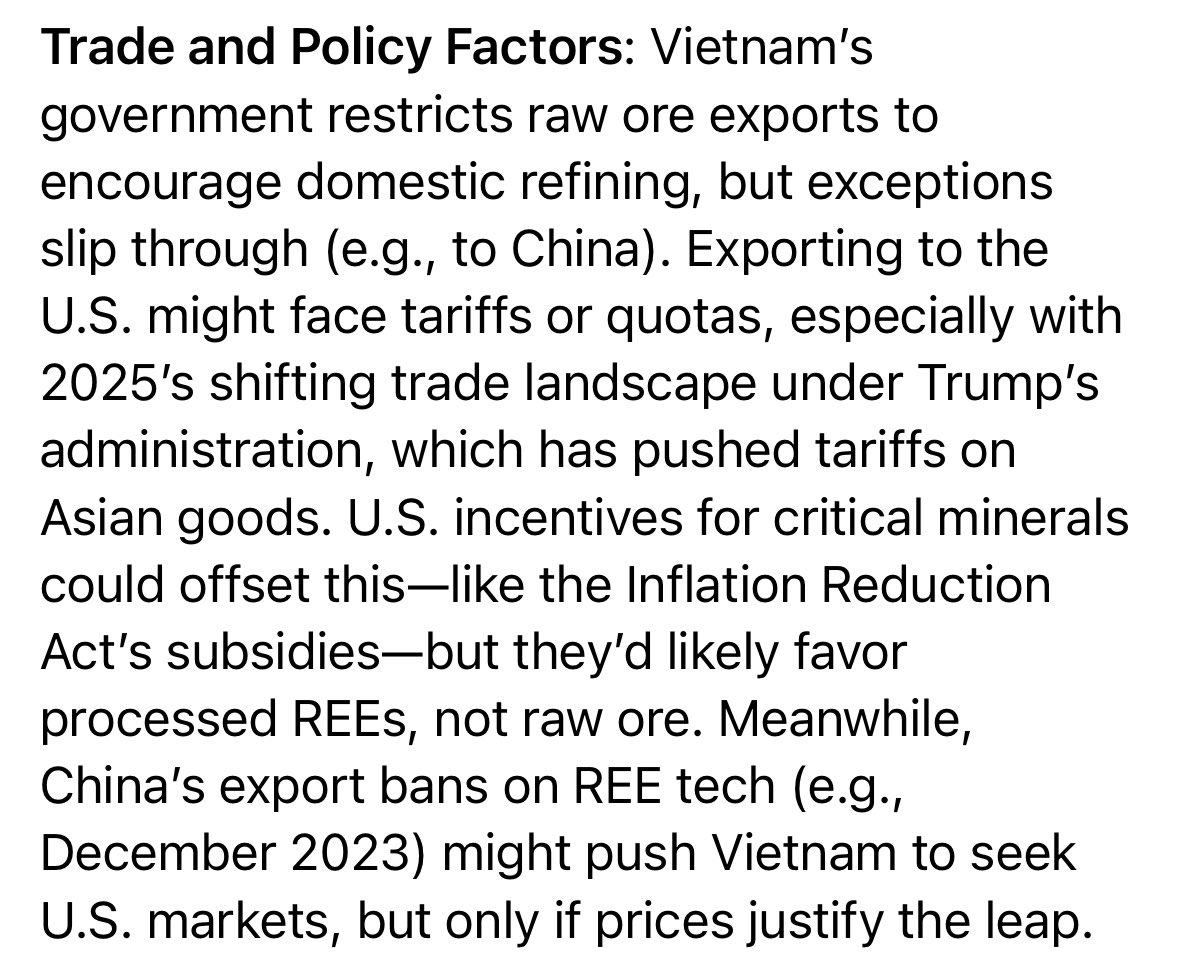I wrote this thread about Trump’s inability to trust any deal with China after his experience in the first term attempting a trade deal with Xi.
Since then, Trump has dropped hints that he will just unilaterally impose a deal on China.
🧵 Let’s dive into what’s happening:
Since then, Trump has dropped hints that he will just unilaterally impose a deal on China.
🧵 Let’s dive into what’s happening:
https://twitter.com/sethjlevy/status/1910376276163953043
The fundamental problem with China as a trade partner is that you can’t trust them to keep their commitments.
Particularly when you are asking them to violate their cultural norms or their 100 year objectives.
Ultimately they force you to conform to them.
Particularly when you are asking them to violate their cultural norms or their 100 year objectives.
Ultimately they force you to conform to them.

Trump has solved for this and he’s been previewing it for a few days now.
6 days ago with a wry smile, “I believe we are going to have a deal with China. And if we don’t, we are going to have a deal anyway because we are going to set a certain target and that’s going to be it.”
6 days ago with a wry smile, “I believe we are going to have a deal with China. And if we don’t, we are going to have a deal anyway because we are going to set a certain target and that’s going to be it.”
At what level will he set the target?
“I may not want to go higher or I may not want to go up to [145%]. I may want go to less because you want people to buy and at a certain point people aren’t going to buy.”
He will , at some point, bring the tariff down.
“I may not want to go higher or I may not want to go up to [145%]. I may want go to less because you want people to buy and at a certain point people aren’t going to buy.”
He will , at some point, bring the tariff down.
It’s not just China that he doesn’t trust.
Many countries fit this bill.
What will be the penalty for untrusted partners?
Not clear yet except it will be higher than those with whom we have made a deal.
“If we don’t make a deal, we’ll just set a target and live with that.”
Many countries fit this bill.
What will be the penalty for untrusted partners?
Not clear yet except it will be higher than those with whom we have made a deal.
“If we don’t make a deal, we’ll just set a target and live with that.”
Given this relief valve mechanism where Trump just sets the levels and moves on, how long until this initial in or out negotiating phase ends?
“I would think over the next three or four weeks”
Btw, this is a timeline that fits within the passage of the Big Beautiful Bill.
“I would think over the next three or four weeks”
Btw, this is a timeline that fits within the passage of the Big Beautiful Bill.
So what was the hullabaloo about what Trump said yesterday?
Claims that Trump was suddenly softening on China.
All Trump said was that he’d be nice to China.
But also China has to make a deal or they will damage their ability to access the US market.
Trump holds the cards.
Claims that Trump was suddenly softening on China.
All Trump said was that he’d be nice to China.
But also China has to make a deal or they will damage their ability to access the US market.
Trump holds the cards.
What Trump is clearly signaling to Xi is that he will not beg for a deal.
China can make it or not.
Up to them.
Either way, Trump will maintain control of the mechanisms that will favor American companies and domestic manufacturers especially in the new tech space.
China can make it or not.
Up to them.
Either way, Trump will maintain control of the mechanisms that will favor American companies and domestic manufacturers especially in the new tech space.

If you liked this thread please follow @sethjlevy.
Subscribe to support more content like this.
Subscribe to support more content like this.
20 minutes after I posted this thread:
https://twitter.com/deitaone/status/1915037738673258621
• • •
Missing some Tweet in this thread? You can try to
force a refresh












